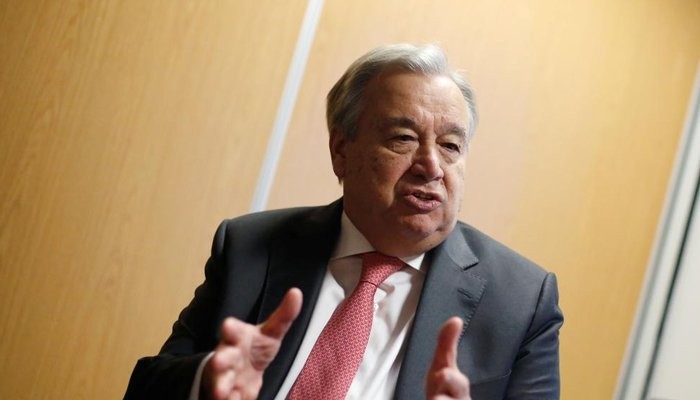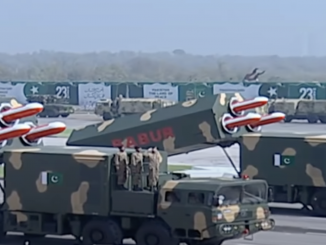
Ever since the Kargil conflict, Pakistan was projected as a state that uses its nuclear capability for coercion and was accused for nuclear blackmail. However, while a lot has been written on the Pulwama crisis, what is often overlooked is the crisis behavior of Pakistan during the Pulwama crisis. Prior to and up till the Pulwama crisis, Pakistan’s Full Spectrum Deterrent Posture (FSD) was believed to be focused on the use of Pakistan’s tactical nuclear weapons Nasr. The assumption was that being conventionally weak, Pakistan would use its tactical nuclear weapon quite early against any Indian conventional attack. The view totally overlooked Pakistan’s conventional military capabilities. Of late, several Indian analysts argued that India should call Pakistan’s nuclear bluff. It was overconfidence of its own capabilities and misreading as well as misunderstanding of Pakistan’s Full-spectrum deterrent posture that India attacked Pakistan on 26 February 2019. However, Pakistan’s response was different from what India and the world anticipated.
Pulwama crisis is significant for several reasons; prime amongst the dominant role played by the Air forces and the use of Beyond Visual Range (BVR) missile and AWACS. However, what has not received enough attention is Pakistan’s crisis behavior during the Pulwama crisis.
What does this crisis tell us about Pakistan’s risk-taking and crisis behavior? The following should be considered to answer this: first, Pakistan made intentional efforts not to escalate the conflict. From the IAF’s failed Balakot strike to PAF’s successful strike on a non-military target in the Indian controlled Kashmir, Pakistan had an option to escalate the crisis yet it intentionally restrained its responses to keep the crisis from escalating. Second, reacting to the 14 February 2019 attack India deliberately escalated both vertically as well as horizontally by attacking Pakistan proper using IAF as it wanted a reaction from Pakistan. Third, Pakistan had to respond to ensure that deterrence is maintained and signal to India that it is capable of defending itself as per its Quid Pro Quo Plus policy yet instead of going for a tit-for-tat reciprocity, Islamabad waited and responded at a time and place of its choosing. Fourth, unlike India, Pakistan kept its response restricted to the disputed territory. Even the decision of how to respond to the Indian attack was aimed at ensuring that no escalation takes place. The PAF, after locking on to military targets such as the Northern Command (15 Corps headquarters), which at the time had senior Indian army commanders present, including the commanders of the 15 Corps and the Northern Army Command, it unlocked and targeted an empty area to ensure that the Indians got the message without escalating the conflict.
In the ensuing air battle, PAF jammed the communication link of the IAF MiG, shot it down and arrested the pilot. In the fog of war, IAF panicked and destroyed its own M17 helicopter killing seven people. Fifth, two days later, Pakistan released IAF Wing Commander Abhinandan unconditionally as a peace gesture. Sixth, Pakistani prime minister repeatedly called for a dialogue and peace. Even the Indian strategic community concedes this point: “ Pakistan’s response stayed at the conventional level. Even at the conventional level, Pakistan’s response was arguably neither escalatory nor proportionate because no Indian facility was hit. Moreover, the Indian pilot whose plane was shot down by Pakistan in an aerial dogfight was returned without any concessions even being demanded from New Delhi.” Seventh, throughout the crisis, Islamabad ensured that it should not take any step that would be taken as reactionary and escalatory. At the same time, it ensured that deterrence stability is ensured. Eighth, Islamabad also avoided any nuclear signaling and maintained deterrence stability using conventional means. Ninth, this approach was in contrast to all projections and analysis according to which Pakistan would resort to the use of nuclear weapons. Tenth, Pakistan turned out not only confident of its conventional capability but also of maintaining deterrence through conventional means alone. Eleventh, unlike Modi’s India that intentionally used brinkmanship, Islamabad remained focused on maintaining deterrence. Twelfth, It was India that brought in the nuclear factor when in operationalized its naval assets including the nuclear SSBN INS Arihant. What is worrisome is that few reports indicated that it was done without authorization of the Indian Nuclear command authority.
One should be cognizant of the fact that Pakistan’s crisis behavior throughout Pulwama crisis was not only based on rational calculations, it greatly contributed to the crisis termination. Pakistan’s demonstration of its conventional capability not only shed away the assumption that it would use nuclear weapons in a conflict situation, it also maintained deterrence using conventional means. At the same time, Pakistan’s crisis behavior contributed to the crisis termination as Pakistan kept its response non-escalatory and measured to ensure no room for escalation of the conflict. Now that the world and India is aware of this, it should bode well for strategic stability between India and Pakistan. Whether it would actually happen? That is a different story.
![]()




Be the first to comment